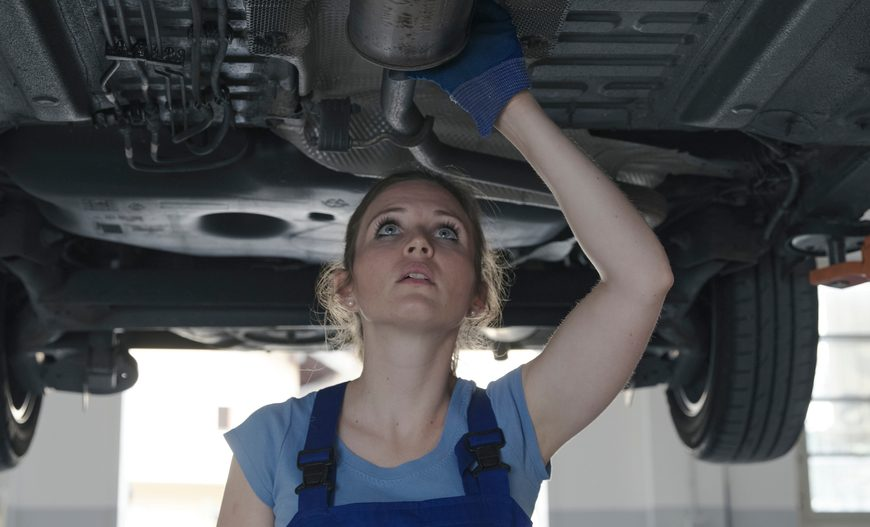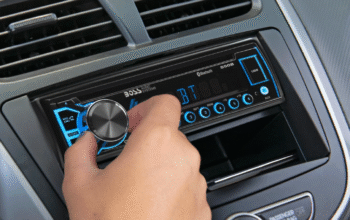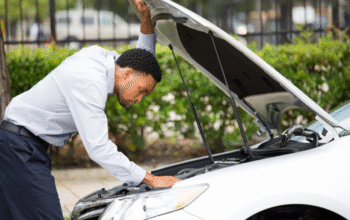Car leaks are some of the most annoying issues that drivers will deal with. Especially when they seem to come from nowhere. Whether you’ve got a small oil drop on your driveway or a coolant leak that results in your car overheating, dealing with leaks is important for any car owner to manage for the continued smooth and safe running of their vehicle. The good news is that not all leaks will require you to spend time at the mechanic and fix the problem at an expensive rate. With a little time and the right knowledge, many common car leaks can be fixed at home.
In this article, we will guide you through common car leaks, how to idntify them, and how to fix them without going to a workshop.
Common Types of Car Leaks
Before fixing any leak, it’s essential to understand what kind of fluid is leaking. Here are the most common types:
1. Engine Oil Leak
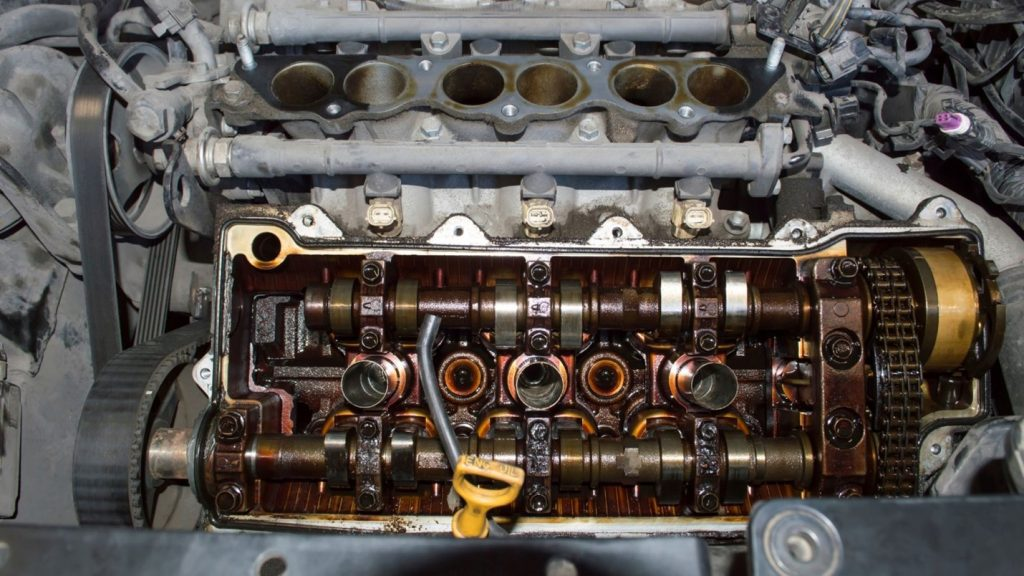
Color: Brwn or dark amber
Location: Usually found under the engine area
2. Coolant Leak
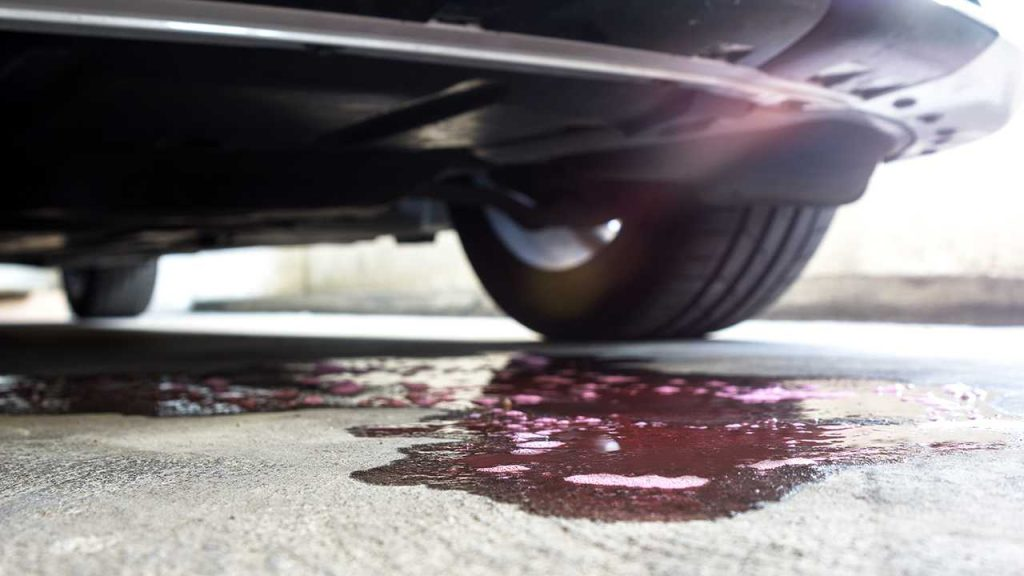
Color: Green, orange, or pink
Location: Front of the car, near the radiator or under the engine
3. Transmission Fluid Leak
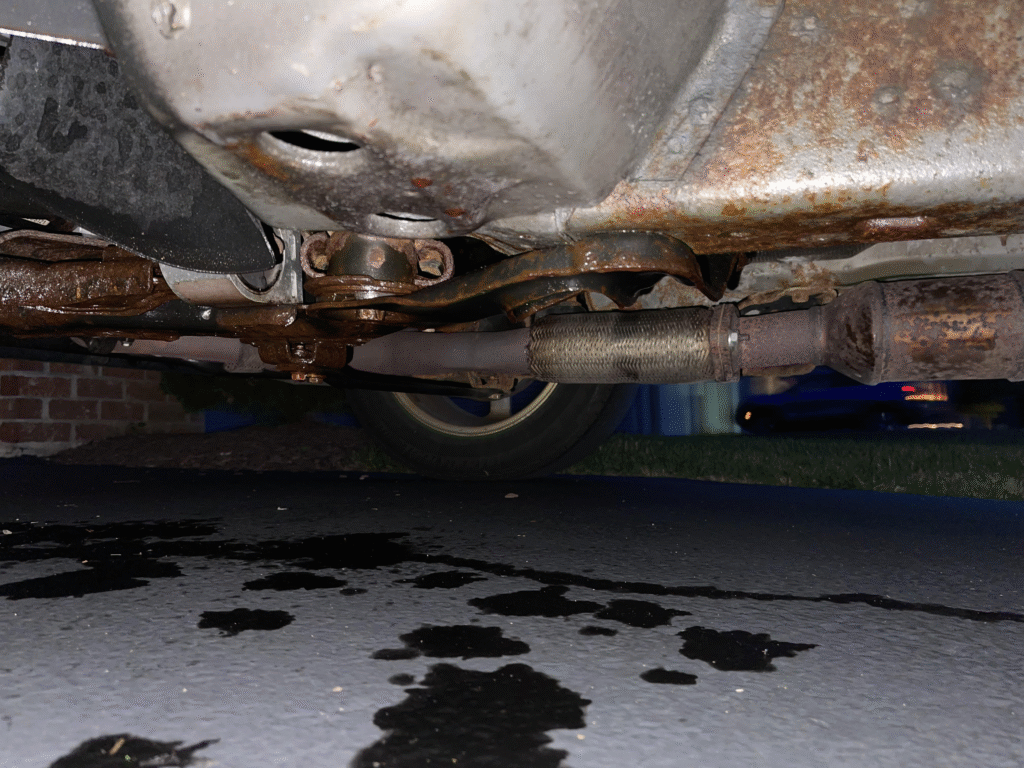
Color: Red or brown
Location: Center of the vehicle uder the transmission
4. Brake Fluid Leak
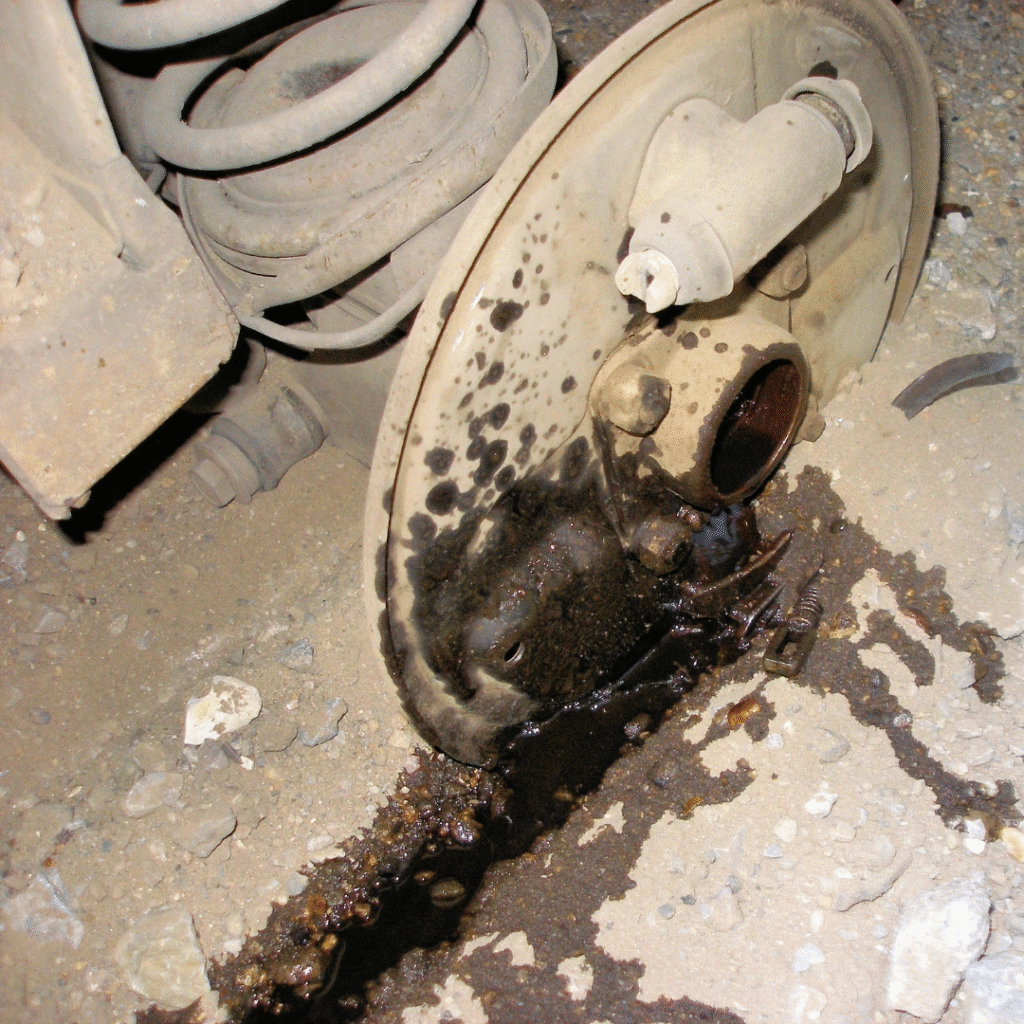
Color: Clear to yellow, oily texture
Location: Near the wheels or under the brake mster cylinder
5. Power Steering Fluid Leak
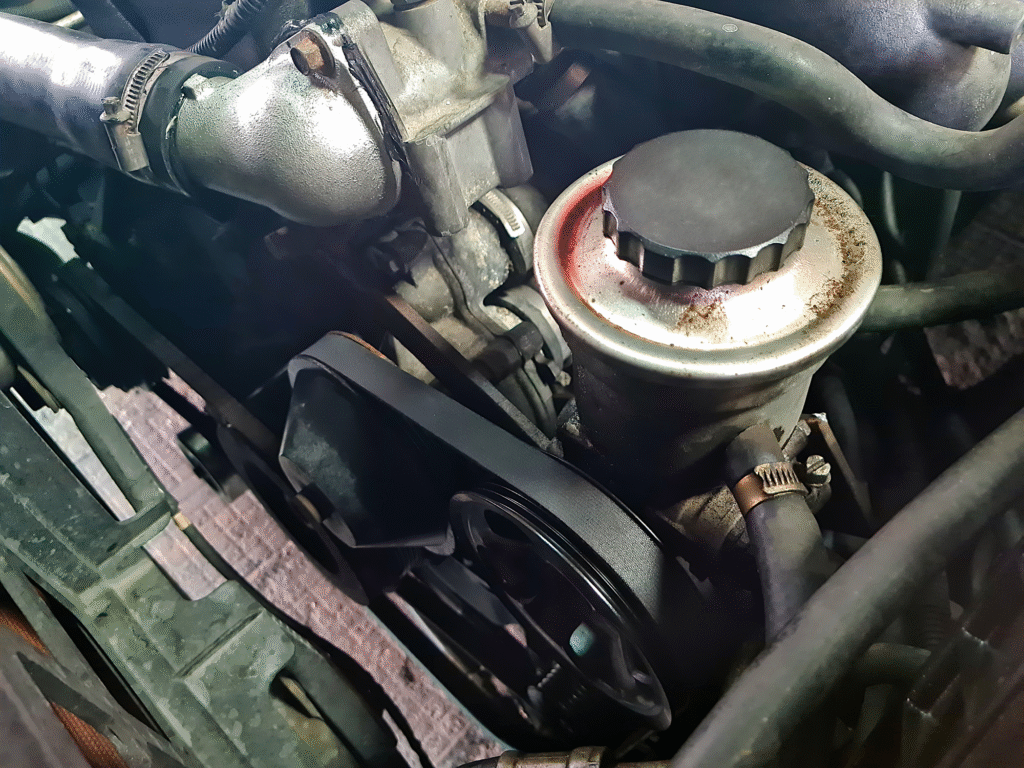
Color: Reddish or light brown
Location: Around the steering rack or power steering reservoir
6. Windshield Washer Fluid Leak
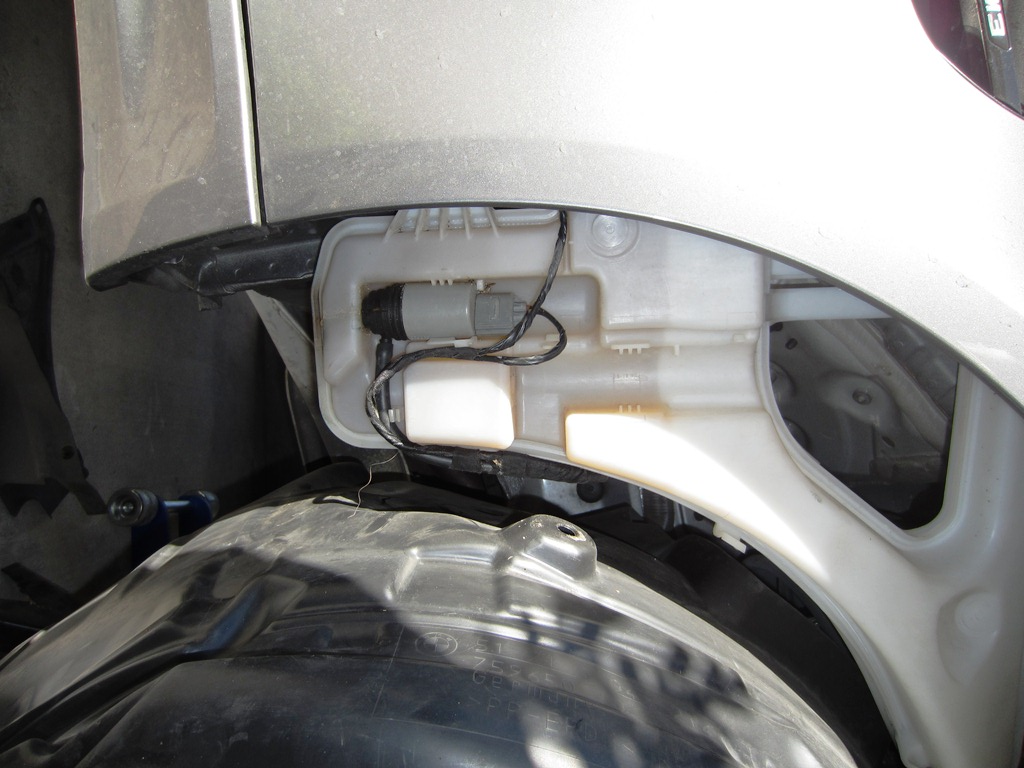
Color: Blue or green
Location: Under the front bumper area
Step-by-Step: How to Fix Each Leak Type
Let’s go through how you can fix each of these leaks with simple tools and minimal cost.
1. Fixing an Engine Oil Leak
Tools You’ll Need:
- Wrench set
- Oil stop leak additive
- Replacement oil filter and gasket (if needed)
Steps:
- First, clean the engine with a degreaser to locate the leak source clearly.
- Common sources include the oil pan gasket, valve cover gasket, or oil filter.
- If the oil filter is loose, simply tighten it by hand. If it’s old or damaged, replace it.
- Use an oil stop leak product. These additives can help swell and seal rubber gaskets.
- If the leak persists, replace the faulty gasket using a torque wrench to ensure correct tightness.
2. Fixing a Coolant Leak
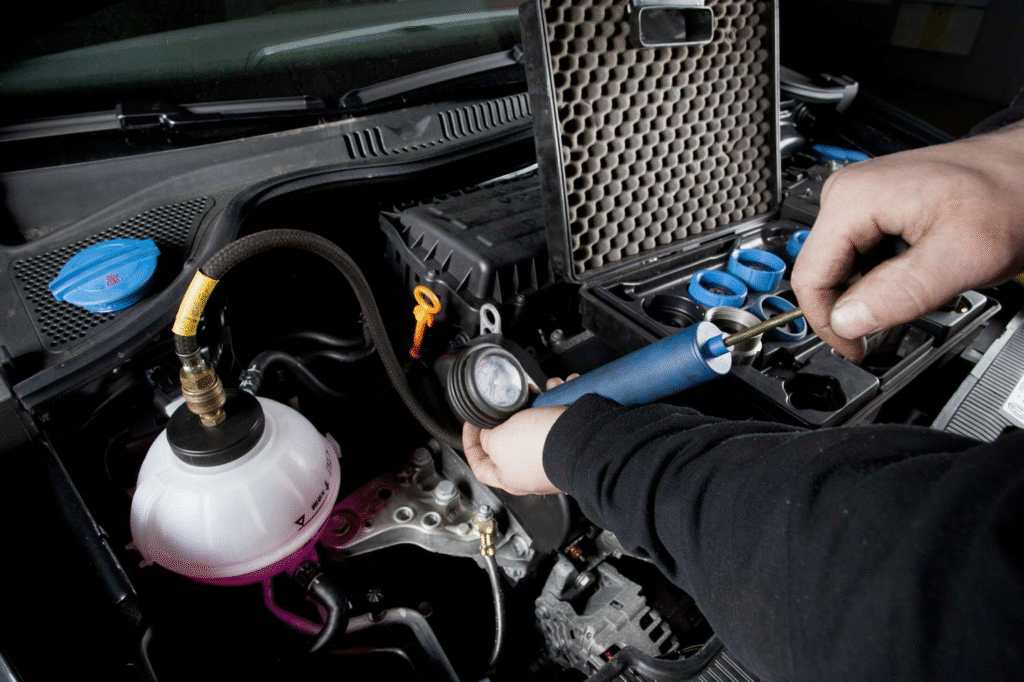
Tools You’ll Need:
- Radiator sealant
- Hose clamps
- Coolant fluid
- Screwdriver
Steps:
- Let the engine cool completely before starting.
- Inspect radiator hoses for cracks or bulges—if found, replace the hose and use new clamps.
- For minor radiator leaks, use a radiator sealant that circulates with the coolant and seals small cracks.
- Refill the coolant and monitor the temperature gauge over the next few drives.
3. Fixing a Transmission Fluid Leak
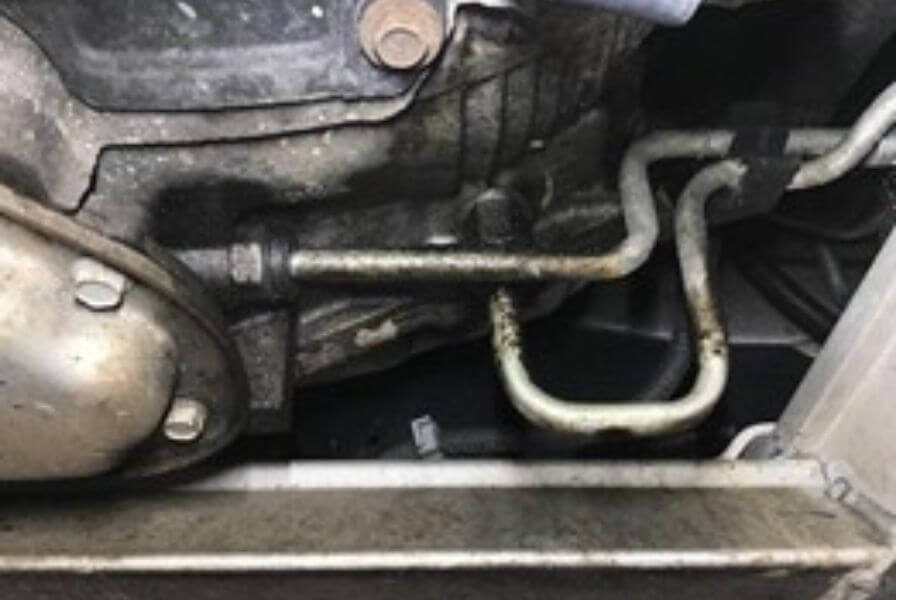
Tools You’ll Need:
- Transmission stop leak additive
- Socket wrench
- New gasket or seals (if required)
Steps:
- Lift the vehicle safely with jack stands.
- Check the transmission pan and gasket. If the gasket is worn, replace it.
- Add a transmission stop leak product to the fluid reservoir.
- Avoid overfilling, and take the car for a short drive to let the additive circulate.
4. Fixing a Brake Fluid Leak
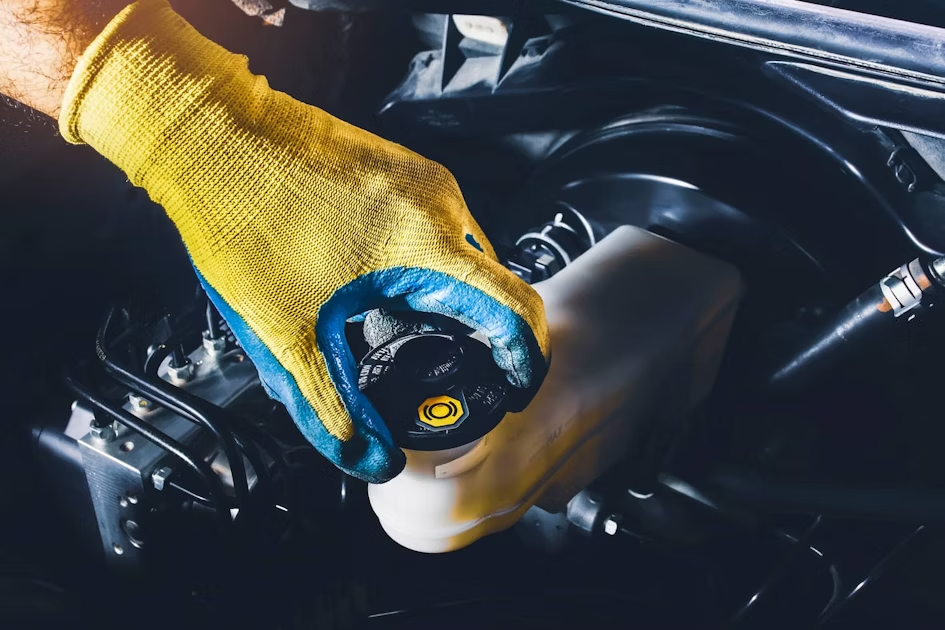
Warning: Brake fluid leaks are serious. If you’re unsure, consult a professional.
Tools You’ll Need:
- Brake fluid
- Line wrench
- Rubber seal kit (if needed)
Steps:
- Identify whether the leak is from a brake line, master cylinder, or caliper.
- Tighten any loose connections with a line wrench.
- If you see rubber seals damaged on the caliper, replace them using a caliper repair kit.
- After fixing, bleed the brake system to remove any trapped air.
- Test brakes in a safe area before returning to normal driving.
5.Fixing a Power Steering Fluid Leak
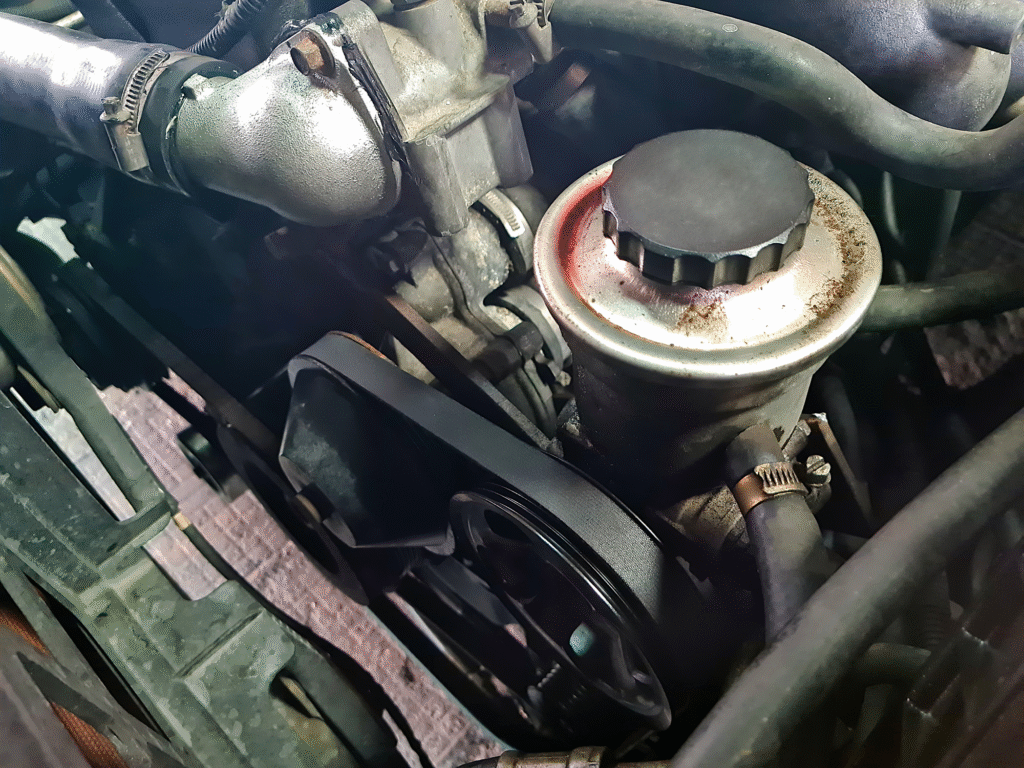
Tools You’ll Need:
- Power steering stop leak
- Hose clamps
- Replacement hose (if cracked)
Steps:
- Check the power steering reservoir and the hoses leading from it.
- Replace any cracked hoses and tighten loose clamps.
- Add a power steering stop leak product and top off the fluid.
- Start the engine and turn the wheel left to right to help the additive circulate.
- Monitor the fluid level for a few days.
6. Fixing a Windshield Washer Fluid Leak
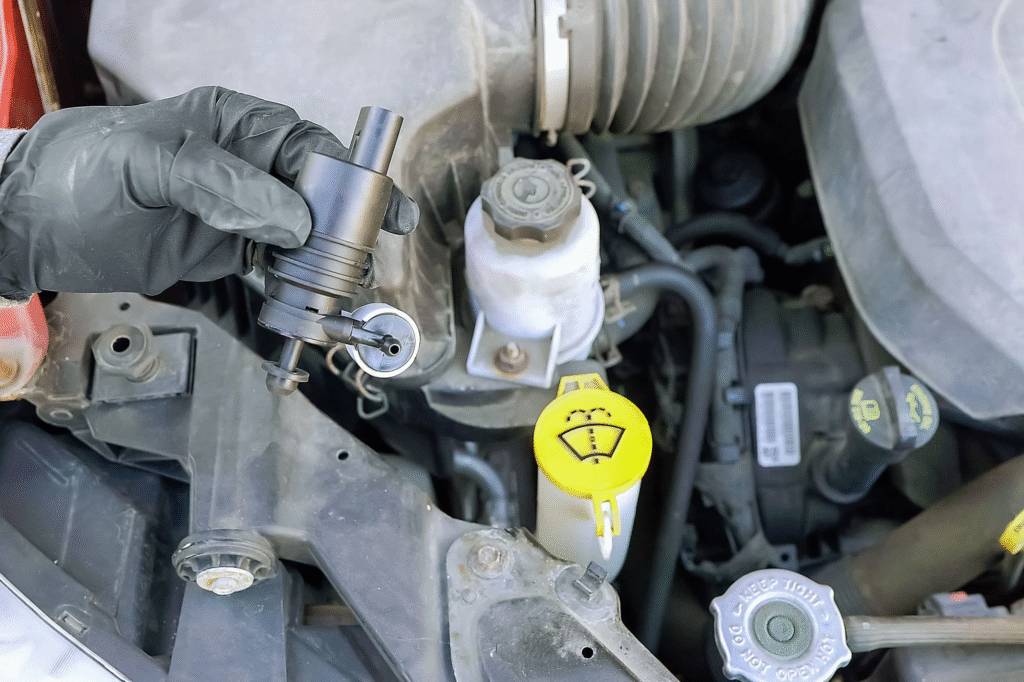
Tools You’ll Need:
- Epoxy or silicone sealant
- Replacement hose or reservoir (if broken)
Steps:
- Check under the hood for the washer reservoir and the small hoses connected to it.
- If a hose is disconnected or cracked, replace or reconnect it.
- For small cracks in the plastic reservoir, use waterproof epoxy to seal the crack.
- Refill the washer fluid and test the system.
General Tips to Prevent Future Leaks
- Regular maintenance: Change fluids and filters on schedule.
- Use quality fluids: Cheap fluids can break down seals faster.
- Check seals and gaskets: Rubber parts degrade with heat and time.
- Avoid over-tightening bolts: It can crack housings or deform seals.
- Park on level surfaces: Slanted parking can affect fluid levels and cause leaks.
When to Visit a Mechanic
While many leaks can be fixed at home, some situations need professional help:
- Leaks coming from deep inside the engine or transmission
- Brake fluid leaks that don’t stop after replacing seals
- Large puddles of oil or coolant under the car
- Burning smells or smoke from leaking fluids
If you’re unsure of the leak’s source or feel unsafe making the repair, it’s best to let a certified mechanic take a look.
Final Thoughts
Dealing with a car leak may seem daunting, but if you use some common sense, many of these repairs can be done right in your driveway. Identifying the fluid and the source of the leak is 50% the battle. Then with some basic tools and off-the-shelf sealants or replacement parts, you can usually stop the leak and easily save some money.
Taking action sooner prevents small leaks becoming big repairs. So, the next time you see a spot in your driveway, don’t freak out – gear up and take control of your vehicle.

